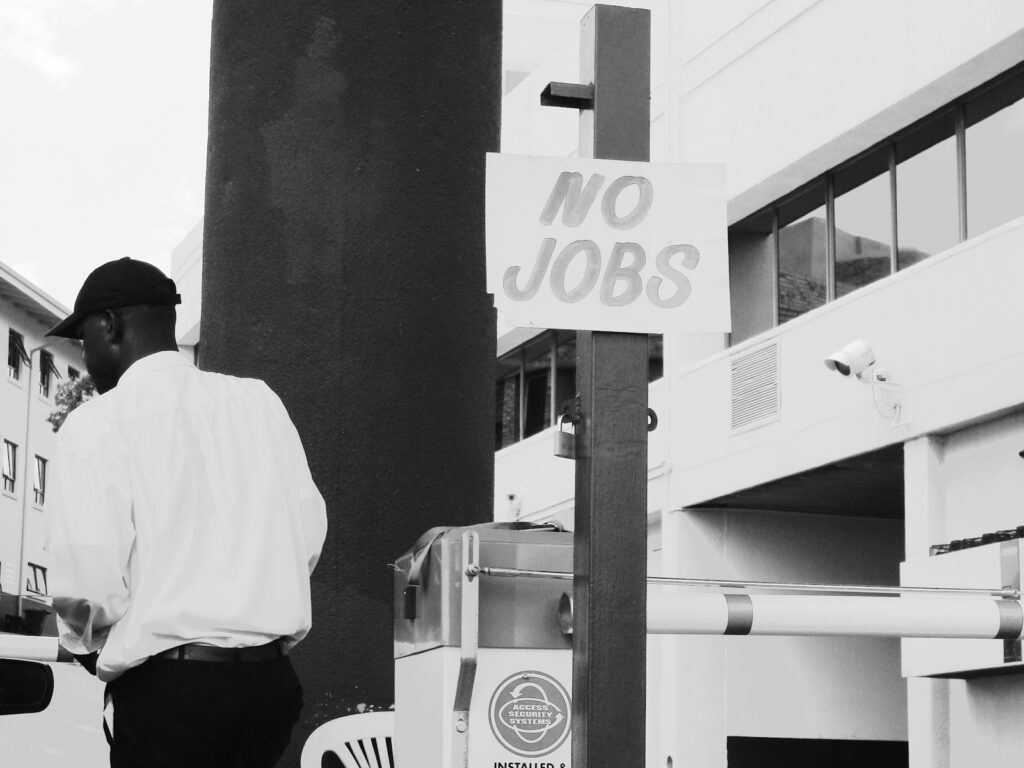
Bankruptcies involving major companies stand as some of the most dramatic and impactful events within the business world. When large corporations, wielding billions of dollars in assets, eventually file for bankruptcy, the repercussions are far-reaching. These financial collapses initiate ripple effects that surge through entire industries, permeate markets, and even directly affect countless individuals.
Such events often lead to thousands of employees losing their jobs, significant plummeting of stock prices, and a pervasive sense of economic uncertainty. Landmark cases like Lehman Brothers and General Motors not only altered the trajectories of the companies directly involved but also fundamentally reshaped their respective industries. These high-profile failures frequently underscore critical missteps, such as poor financial decisions, excessively risky investments, or the overwhelming force of external economic factors.
Understanding these monumental bankruptcies offers invaluable lessons, enabling us to learn from the past and observe how businesses, governments, and individuals collectively respond to immense financial distress. In this in-depth article, we will meticulously examine the 13 most expensive corporate bankruptcies in American history, diving into their precise causes, profound consequences, and enduring impact. Each case provides a unique lens through which to view the volatile intersection of ambition, risk, and economic reality in the United States.

1. **Lehman Brothers Holdings, Inc.**Lehman Brothers’ bankruptcy in September 2008 remains the largest in U.S. history, with over $691 billion in assets at the time of its filing. This monumental collapse was a pivotal event that significantly exacerbated the global financial crisis. As a major investment bank, Lehman Brothers had accumulated substantial exposure to subprime mortgages and other highly risky financial products, rendering its business model critically vulnerable as the housing market unraveled. Unable to secure additional funding, and notably, without a U.S. government bailout, Lehman Brothers was forced into Chapter 11 bankruptcy.
The fallout from Lehman Brothers’ demise was swift and severe, triggering a devastating domino effect across the global economy. This single event led directly to a worldwide recession, characterized by mass job losses, a severe contraction of credit markets, and a pervasive freeze in global credit availability. It fundamentally changed perceptions of risk in the financial sector, revealing the intricate interconnectedness of global financial systems.
The bankruptcy is frequently cited as a defining moment, one that permanently altered the financial landscape and profoundly influenced government responses to subsequent economic crises. Its failure serves as a stark reminder of the potential fragility even within seemingly robust financial institutions and the far-reaching consequences of unchecked risk in a highly leveraged environment.

2. **Washington Mutual**Washington Mutual (WaMu) stands as another colossal casualty of the 2008 financial crisis, filing for bankruptcy in September 2008 with over $327.9 billion in assets. As a major savings and loan institution, WaMu had aggressively expanded its operations, particularly through significant exposure to the burgeoning subprime mortgage market. This strategy proved disastrous when the housing bubble burst, leading to a dramatic increase in defaults on home loans and a severe liquidity crisis. Customer confidence eroded swiftly, leading to an unprecedented run on the bank, with approximately $16.7 billion in deposits withdrawn in ten days.
Faced with imminent collapse, the Federal Deposit Insurance Corporation (FDIC) intervened decisively, seizing the bank’s assets to prevent a wider systemic shock. WaMu’s core banking operations were subsequently sold to JPMorgan Chase for a fraction of their prior value, effectively dissolving the institution. This marked one of the largest bank failures in U.S. history, highlighting the extreme sensitivity of consumer trust in financial institutions during periods of economic distress.
WaMu’s bankruptcy further compounded the financial turmoil of the 2008 recession, bringing intense public scrutiny upon banking regulations and existing risk management practices. The collapse served as a stark example of the perils of unrestrained lending in high-risk markets and the domino effect such practices can have on major financial institutions, prompting calls for more stringent oversight across the industry.
Read more about: A Cosmic Farewell: Rock Icons Unite to Honor Ace Frehley, The ‘Eternal Rock Soldier’ Who Changed Everything

3. **SVB Financial Group (Silicon Valley Bank)**Silicon Valley Bank (SVB), a critical financial institution for numerous tech startups, experienced a dramatic collapse in March 2023, marking the second-largest bank failure in U.S. history with assets exceeding $211.8 billion. The bank’s troubles stemmed from significant losses accumulated in its portfolio of long-term government bonds, which decreased in value as the Federal Reserve aggressively hiked interest rates. This precarious situation was exacerbated by its clientele of tech startups, who began rapid deposit withdrawals, forcing SVB to sell devalued bonds at a loss and intensifying a liquidity crunch.
A critical misstep occurred when SVB’s CEO publicly announced the company’s losses and urgent capital requirement before funding was secured. This premature announcement ignited widespread panic among customers, triggering an unprecedented bank run. An astounding $42 billion was withdrawn in a single day, leaving the bank with a negative balance and rendering it immediately insolvent, demonstrating the power of public perception in a crisis.
The California Department of Financial Protection and Innovation swiftly intervened, shutting down the bank and placing it under FDIC receivership. SVB’s collapse sent profound shockwaves throughout the tech industry and raised significant concerns about regional banks. The event prompted the Biden administration to promise securing all customer deposits, though shareholders and creditors faced significant losses, underscoring vulnerabilities in rapidly changing markets and concentrated client bases.

4. **Signature Bank**Following closely on the heels of Silicon Valley Bank’s collapse, Signature Bank, another significant lender, also filed for bankruptcy on March 12, 2023, with reported assets of $110.4 billion. Its failure, occurring just days after SVB, dramatically escalated fears of a wider, systemic banking crisis, particularly given its substantial presence in the cryptocurrency industry. While specific detailed causes for Signature Bank’s downfall are less elaborated in the provided context, its immediate proximity to SVB’s failure suggests a shared vulnerability to the evolving economic landscape and the broader sentiment of panic.
The rapid succession of these two major bank failures in March 2023 created an intensely uncertain week for financial markets, with mounting concerns over deposit safety and the stability of regional banks. When public panic sets in and spreads rapidly, often amplified by social media, even institutions with potentially sounder fundamentals can face overwhelming deposit withdrawals, highlighting the critical role of market confidence during times of financial stress.
In response to this double blow, the Biden administration moved to reassure the public, promising to secure the deposits of all customers at both institutions. This intervention was crucial in stemming broader panic, though it resulted in significant losses for shareholders and creditors. Signature Bank’s bankruptcy underscored the vulnerabilities that can emerge when rapid market shifts and concentrated client bases intersect, forcing immediate regulatory and governmental action to stabilize the financial system.
Read more about: Only Legends Know: Rediscovering 12 Iconic Car Stereos That Defined an Era of In-Car Audio Excellence

5. **WorldCom Inc.**WorldCom’s bankruptcy in July 2002, with assets totaling $103.9 billion, was one of the largest corporate bankruptcies at the time and exposed one of the biggest accounting scandals in history. The telecommunications giant was brought down by a deliberate and elaborate scheme of financial deception orchestrated by CEO Bernard Ebbers and other top executives. They systematically inflated company earnings by billions of dollars, improperly classifying operating expenses as capital expenditures to boost reported profits and hide true financial losses.
The extensive fraud began to unravel after an internal audit uncovered these deceptive practices, leading to immediate public outcry and a rapid loss of market trust. This resulted in the company’s swift downfall, wiping out billions in investor wealth and devastating thousands of employees who lost their jobs and retirement savings. Several top executives, including Ebbers, were subsequently convicted of fraud and sentenced to significant prison terms, marking a stern response to corporate malfeasance.
WorldCom’s bankruptcy became a major catalyst for increased scrutiny of corporate governance and accounting practices in the United States, playing a significant role in the passage of the Sarbanes-Oxley Act of 2002. The legacy of WorldCom serves as a powerful cautionary tale about the dangers of corporate malfeasance and the essential need for transparent financial reporting and robust internal controls to protect investors and employees alike.

6. **General Motors**General Motors (GM) filed for bankruptcy in June 2009 with assets totaling $91.0 billion, marking one of the most significant industrial bankruptcies in U.S. history. This iconic American automobile manufacturer, once a pillar of national industrial strength, faced insurmountable challenges due to declining sales, high legacy labor costs, and an inefficient product line. Years of financial mismanagement, coupled with the severe global economic downturn of 2008-2009, drastically reduced consumer demand and pushed GM to the brink of collapse.
In an unprecedented move, the U.S. government stepped in with a massive bailout package, providing crucial financial assistance that allowed GM to navigate bankruptcy proceedings. This intervention, though controversial, was deemed necessary to preserve millions of jobs and prevent a catastrophic collapse of the domestic auto industry. Under government supervision, GM embarked on a radical restructuring program to streamline operations and restore long-term viability, showcasing a coordinated effort to save a critical sector.
Through this restructuring, GM shed unprofitable brands, closed underperforming dealerships, and refocused its product strategy on core offerings. The company eventually emerged from bankruptcy as a leaner, more agile entity, returning to profitability. GM’s experience underscored the critical and often debated role government intervention can play in stabilizing major industries during severe economic crises, highlighting the complexities of managing “too big to fail” corporations.
Read more about: Olympic Disgrace: Unpacking 6 Doping Scandals That Stripped Athletes of Their Hard-Won Medals
.svg/480px-Pacific_Gas_and_Electric_Company_(logo).svg.png)
7. **PG&E Corporation (2019 bankruptcy)**PG&E Corporation, one of California’s largest utilities, filed for bankruptcy in January 2019, citing massive liabilities of $71.4 billion. This filing was a direct consequence of its role in sparking devastating wildfires across California, particularly the 2018 Camp Fire, which resulted in 85 tragic deaths and thousands of homes destroyed. For years, PG&E had grappled with increasing scrutiny regarding the maintenance of its transmission lines and electrical equipment in wildfire-prone areas, accumulating billions in potential liabilities from numerous lawsuits.
The sheer scale of these liabilities made its financial position untenable, forcing the company to seek bankruptcy protection to manage overwhelming claims. PG&E’s restructuring plan, developed during bankruptcy, included comprehensive measures aimed at significantly improving safety protocols and corporate governance, alongside substantial investments in wildfire prevention and grid modernization. This illustrated a concerted effort to address its core operational and safety deficiencies.
While the utility successfully exited bankruptcy, the process raised serious and ongoing concerns about the fundamental reliability and accountability of privately owned utilities when confronted with public disasters on such a massive scale. PG&E’s situation exemplifies the complex challenges faced by utility companies in regions susceptible to climate change impacts, highlighting the delicate balance between providing essential services, maintaining robust infrastructure, and managing catastrophic natural disaster risks effectively.
Continuing our journey through the annals of American corporate failures, we now shift our focus to the next tier of significant bankruptcies. These cases, while perhaps less globally impactful than a Lehman Brothers, nonetheless offer crucial insights into specific industry vulnerabilities, the repercussions of ambitious growth strategies, and the ever-present challenges of financial oversight. Each story underlines distinct corporate missteps and economic pressures, collectively enriching our understanding of the volatile landscape of modern business. We explore the unique challenges, restructuring efforts, and broader economic implications of these monumental collapses.
Read more about: Unlock Your Dream Vacation for Under $1000: 14 AI Hacks to Plan Your Next Escape Effortlessly
8. **Enron Corp**Enron Corporation’s bankruptcy in December 2001, with assets valued at $65.5 billion, sent shockwaves through the global business community, marking one of the most infamous corporate scandals in American history. Once lauded as an innovative energy trading giant, Enron’s spectacular collapse was not merely a business failure but the direct result of widespread, elaborate accounting fraud. Executives systematically used complex financial structures and special purpose entities to hide billions of dollars in debt and inflate company earnings, creating an illusion of robust profitability.
The unraveling began as whistleblowers uncovered these deceptive practices, leading to a swift loss of market trust and investor confidence. The revelation of such a monumental deception triggered an immediate and precipitous downfall for the company. This cascade of events did not just impact Enron; it also brought down Arthur Andersen, one of the world’s largest accounting firms, which was convicted of obstructing justice related to Enron’s audits.
The aftermath was devastating for countless employees who lost their jobs and retirement savings, and for investors whose wealth evaporated overnight. Several top executives, including CEO Kenneth Lay and CFO Andrew Fastow, were subsequently convicted of fraud and sentenced to significant prison terms, underscoring a stern legal response to corporate malfeasance. The scale of the fraud led to public outcry for greater accountability in corporate governance.
Enron’s bankruptcy became a primary catalyst for major reforms in financial regulation, most notably the Sarbanes-Oxley Act of 2002. This landmark legislation aimed to improve corporate transparency, strengthen auditor independence, and enhance executive accountability. The Enron saga remains a powerful cautionary tale, illustrating the catastrophic consequences of unchecked corporate greed and the indispensable need for ethical financial reporting and robust internal controls.
Read more about: The Essential Guide to Faulty Trades and Robust Risk Management: 14 Strategies to Safeguard Your Portfolio

9. **MF Global Holdings**MF Global Holdings, a global financial derivatives broker, declared bankruptcy in October 2011 with assets totaling $40.54 billion. The firm, a long-standing participant in the commodities and financial markets, succumbed to severe liquidity issues. These challenges were largely driven by a series of off-balance sheet repo agreements and a substantial, ill-fated $6.3 billion investment in risky Eastern European sovereign bonds, a bet that ultimately proved disastrous.
The complex nature of these financial maneuvers, particularly the off-balance sheet transactions, obscured the true extent of the company’s financial exposure to regulators and investors. As market conditions deteriorated and the value of its bond portfolio plummeted, MF Global found itself facing an untenable liquidity crunch, unable to meet its obligations. The failure of this significant bond investment acted as a critical tipping point, sending the company into immediate distress.
The bankruptcy was particularly impactful due to allegations of improper segregation of customer funds, leading to significant investigations and a loss of confidence in the financial derivatives sector. The collapse created widespread concern among clients who feared the loss of their deposited assets, highlighting major vulnerabilities in how brokers managed and protected client money during periods of financial stress. This crisis underscored the need for rigorous adherence to financial regulations governing client funds.
MF Global’s swift downfall served as a stark reminder of the inherent risks within highly leveraged financial markets and the potential for complex, opaque financial instruments to accelerate a company’s demise. It reinforced the importance of robust risk management frameworks and transparent financial reporting, particularly in an industry dealing with volatile derivatives. The event prompted renewed scrutiny over segregation rules and the oversight of brokerage firms to prevent similar mishandling of customer assets.
Read more about: Navigating the Roads: 14 Pickups and Factors American Insurers Now Flag as ‘High-Risk’ for Owners
These pivotal bankruptcies, from the accounting deceptions of Enron to the economic downturn-induced struggles of Chrysler and CIT Group, offer a compelling narrative of ambition, oversight, and survival in the American corporate landscape. They stand as immutable markers, reminding us that even the most formidable institutions are susceptible to the intricate dance of market forces, internal governance, and external economic shifts. Each failure is not just an endpoint but a rich source of data, providing invaluable lessons that continue to shape regulatory frameworks, risk management strategies, and the very fabric of our global financial systems. By meticulously dissecting these dramatic collapses, we equip ourselves with the foresight to better navigate the unpredictable currents of business and safeguard against future vulnerabilities, ensuring a more resilient economic future.




